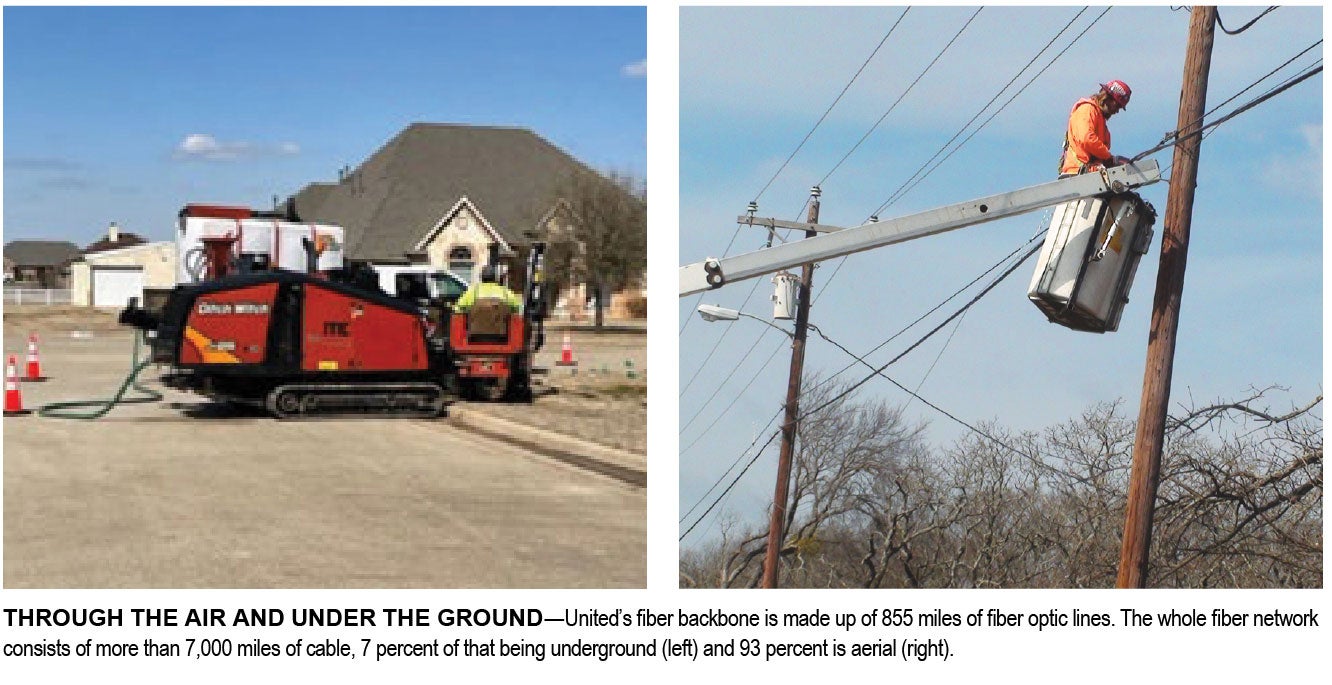In February, United Cooperative Services completed a significant milestone by implementing what it refers to as the “seven rings” or backbone of its fiber network. The backbone comprises seven physical rings of a redundant fiber network that transport traffic from the member’s home, through United’s network, and then out to one of six Points of Presence that contact hubs in Dallas, which then connect United’s network to the internet.
“The completion of the backbone is the culmination of many people’s hard work,” said United CEO Cameron Smallwood. “From the drafting board to the field, United has worked to provide the highest quality fiber network to our members. All along we’ve wanted our internet infrastructure to be scalable, with multiple built-in redundancies to be as reliable as possible for our members.”
The way the network rings work, according to Chris MacIntyre, vice president of internet services at United, is that information can flow in either direction along the rings. If there’s an interruption in one segment of the ring, traffic is automatically routed in the other direction, thereby minimizing the radius of outages, and ultimately providing more reliable service to the member.
Before United constructed the seven rings of its fiber optic backbone, co-op member Carmen Manwaring of Granbury did not have access to reliable, high-speed fiber internet. She said she had to rely on satellite internet for a time that, according to her, would go out for hours because of volatile weather such as a windstorm. Then, she tried wireless internet, which had its own issues.

